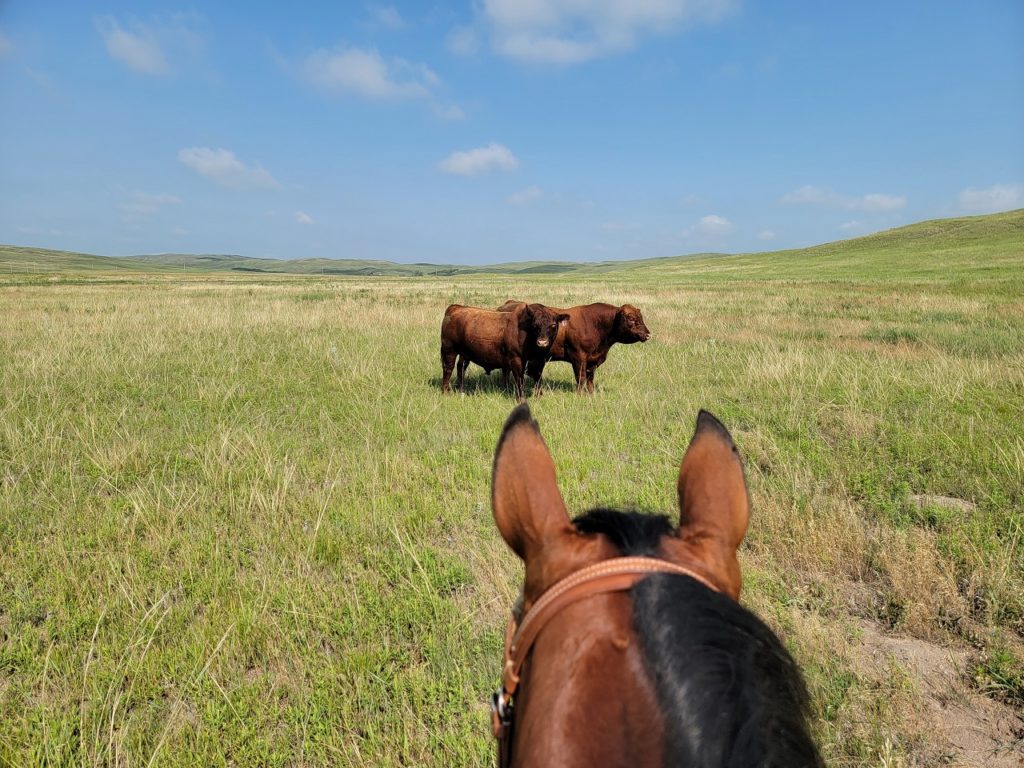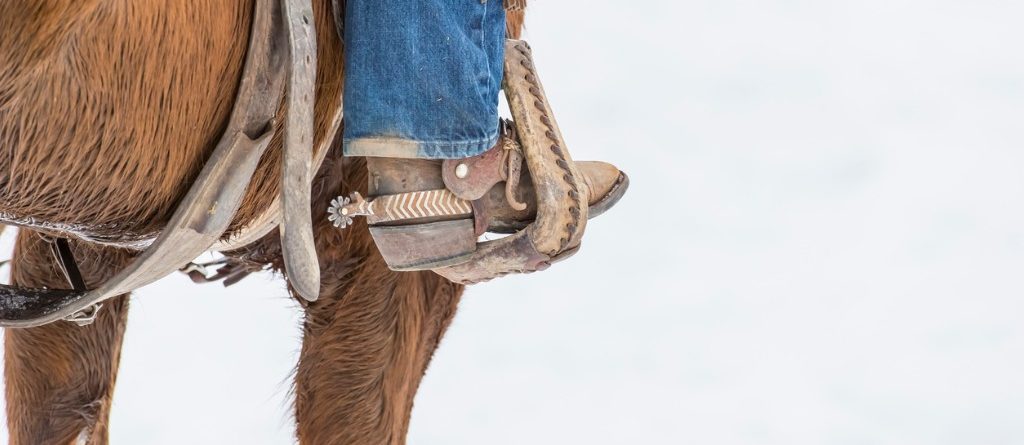We may be finishing the calving season, but it is never too early to be thinking about the breeding season. With the breeding season comes getting those bulls scheduled for their breeding soundness exam (BSE) and ensuring your bull battery are satisfactory breeders.
Breeding Soundness Exam
The American Society for Theriogenology has developed minimum guidelines for a bull to be classified as a satisfactory breeder. A veterinarian will evaluate the bull on the following criteria: a physical examination, scrotal circumference measurement, and evaluate semen quality for motility and morphology. To successfully complete a BSE, a bull must have at least 30% progressive motility (does the individual sperm move in a forward progression), 70% normal sperm morphology (are there any problems with sperm formation), and a minimum scrotal circumference based on age. If a bull does not meet the minimum requirements, he is either classified as deferred (meaning it is recommended that the bull be evaluated again) or as an unsatisfactory potential breeder.
The scrotal circumference tells us the testicular mass. As it increases, so does the daily production of high-quality sperm. Scrotal circumference is also an important measure because it is directly related to the onset of puberty in the bull and his female offspring.
The physical exam is an important part of a BSE. Bulls should be athletic, with sound legs and feet, excellent eyesight and in adequate body condition. The demands of breeding season are extreme, and bulls need to be able to maintain condition throughout the entire season.
Value of a BSE
Ideally, we like to encourage producers to test bulls approximately 4 to 6 weeks prior to the breeding season to ensure that they are satisfactory breeders. This timeframe allows a producer enough time to identify a new bull for breeding if needed. If damage to the scrotum during winter (e.g. frostbite or injury) or other injuries to the bull are identified, giving them ample time to recover will be critical. The production of sperm is a 61-day process, so injuries that occur in March-April may be lingering in May-June. A BSE is a point-in-time measurement, so giving yourself enough time to update your bull battery will be important.
What is the benefit-cost ratio for a BSE? Here’s a scenario: Producer #1 skipped BSE last breeding season. His exposed female to bull ratio was 25 head and he weaned 85% of his calf crop at 560 pounds average weaning weight – which adjusts to 476 pounds per exposed cow. If he sold the weaned calves at $170/cwt, he earned $809.20 for each calf per exposed cow. The following year resulted in the same weaning weights and exposure ratio, but he tested the bulls. As a result, his weaned calf crop increased to 87% because he identified and selected fertile bulls by having a BSE performed. This gave him an average weaning weight of 487 pounds per exposed cow, and $828.24 for each calf – resulting in a change of gross income of $19.04. The cost of the BSE was $65 per head (includes exam, freight, and labor), which calculates to $2.60 for each cow exposed. That gives us the following: $19.04 (income) – $2.60 (cost) = 7.32 benefit-cost ratio. In other words, for every $1 spent on BSE, he gained $7.32. That is a great insurance policy!
To evaluate your benefit-cost ratio on your bull battery, here is a great resource from Texas A&M AgriLife Extension: [excel spreadsheet]
Considerations beyond a BSE
Stocking rate is the number of cows a bull can successfully breed. The nationwide average stocking rate is twenty-five cows per mature bull or fifteen cows per yearling bull. In some systems, stocking rates of up to fifty cows per bull are used, but high stocking rates may lead to later calving cows due to missed heat cycles. Additionally, bull libido (willingness to breed) can be determined only when bulls are on pastures or in pens with females in heat. Bulls may have all the qualifications to pass the BSE, but if they are not actively breeding cows, producers should find different options. Taking the time to watch breeding activity allows for sooner opportunities to catch and correct potential problems, which is much more profitable than waiting for open cows to calve.
SOURCE:
Kacie McCarthy, UNL Cow-Calf SpecialistLindsay Waechter-Mead, DVM, Nebraska Extension Beef Educator
PHOTO: Troy Walz








